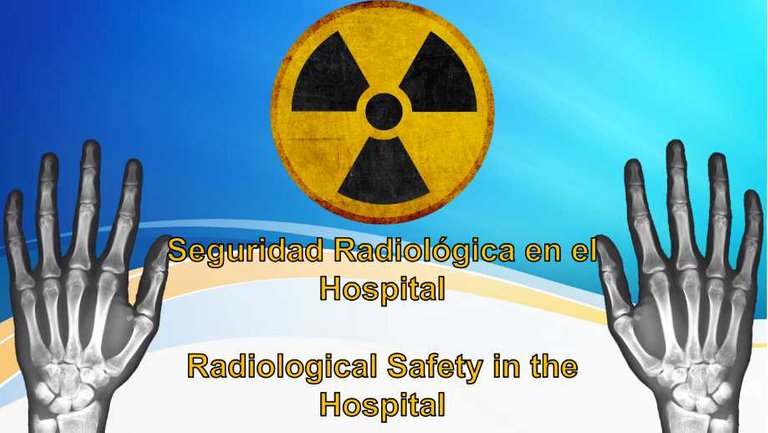
Seguridad radiológica en el hospital
Radiological Safety in the Hospital
¿Como están mis amigos de la colmena?, espero que estén muy bien. En esta oportunidad he vino a hablarles sobre la seguridad radiológica, es un tema que a muchos nos preocupa como pacientes, pero que el departamento de ingeniería biomédica una vez por mes realiza las pruebas pertinentes para mantener la seguridad al máximo.
How are my friends from the hive, I hope you are very well. This time I have come to talk to you about radiation safety, it is an issue that many of us are concerned about as patients, but the biomedical engineering department once a month performs the relevant tests to maintain maximum safety.

Vamos a conocer primero los conceptos de radiación ionizante, de radioactividad, radiación natural y radiación artificial, con la finalidad de poder ir entendiendo lo que se necesita hacer para mantener la seguridad radiológica en el ente sanitario.
We will first get to know the concepts of ionising radiation, radioactivity, natural radiation and artificial radiation, in order to understand what needs to be done to maintain radiation safety in the healthcare institution.
- Las radiaciones ionizantes: son aquellas que debido a la energía que poseen, al interaccionar con la materia producen ionizaciones en la misma, es decir, modificaciones tanto a nivel atómico como molecular.
- Ionising radiation: radiation which, due to the energy it possesses, when interacting with matter, produces ionisation, i.e. modifications at both the atomic and molecular level.
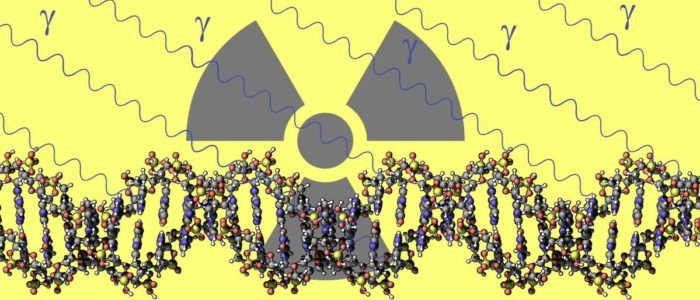
- La radiactividad: esta está ligada a la desintegración de los núcleos de ciertos átomos particulares denominados por esta razón radiactivos. Durante esta desintegración hay emisión de partículas α o β o radiación electromagnética, radiación γ, hasta que los átomos encuentran su estabilidad.
- Radioactivity: this is linked to the disintegration of the nuclei of particular atoms, which are therefore called radioactive. During this disintegration, there is emission of α or β particles or electromagnetic radiation, γ radiation, until the atoms find their stability.
- Radiación Natural: la radiactividad que existe en la naturaleza sin intervención humana. Los seres vivos han estado siempre expuestos a fuentes naturales de radiaciones ionizantes. Una característica distintiva de la irradiación natural es que afecta a toda la población mundial con una intensidad relativamente constante a lo largo del tiempo con variaciones geográficas, pero esta radiación no genera daños en el material atómico de los seres vivos.
- Natural radiation: radioactivity that exists in nature without human intervention. Living beings have always been exposed to natural sources of ionising radiation. A distinctive feature of natural irradiation is that it affects the entire world population with a relatively constant intensity over time with geographical variations, but this radiation does not cause damage to the atomic material of living beings.
- Radiación Artificial: es la radiación producida por el hombre a través de equipos y métodos físicos.
- Artificial radiation: is radiation produced by man through physical methods and equipment.
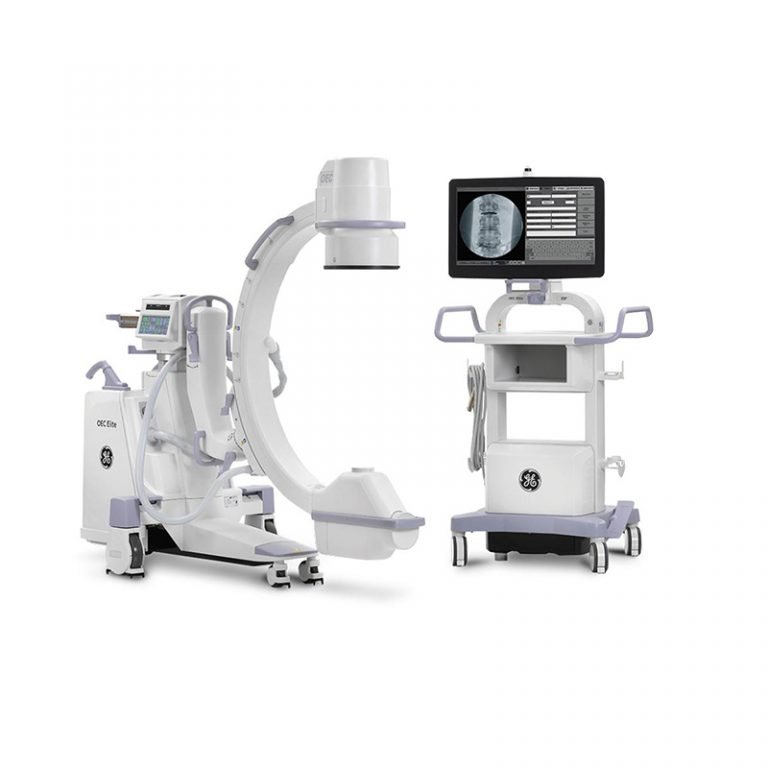
Pero, ¿qué es la radiación hospitalaria? es una radiación de bajo impacto que se utiliza para obtener imágenes médicas del cuerpo humano.
But what is hospital radiation? it is low-impact radiation that is used to obtain medical images of the human body.
What biological effects do X-rays cause?

Los rayos X actúan sobre los tejidos vivos y tienen tres efectos principales:
X-rays act on living tissue and have three main effects:
1. Inhiben el crecimiento.
1. inhibit growth.
2. Destruyen el tejido epitelial.
2. Destroy epithelial tissue.
3. Producen inflamaciones.
3. Produce inflammation.
Basado en estos efectos los rayos X se utilizan para el tratamiento de ciertas afecciones, tratamiento que tiene por objetivo dañar las células enfermas en la mayor proporción posible con respecto a las sanas. La radioterapia convencional suele utilizar un kilovoltaje comprendido entre los 150 kV y 300 kV. La radiación que atraviesa completamente el tejido no causa problemas biológicos, sólo tiene efecto biológico la radiación absorbida total o parcialmente.
Based on these effects, X-rays are used for the treatment of certain conditions, with the aim of damaging diseased cells as much as possible in relation to healthy cells. Conventional radiotherapy usually uses a kilovoltage between 150 kV and 300 kV. Radiation that passes completely through the tissue does not cause biological problems; only radiation that is absorbed in whole or in part has a biological effect.
Los diferentes tejidos no responden igual ante la actividad de los rayos X, si no que depende de la naturaleza del tejido y de su función. Algunos de los tejidos más sensibles a la radiación son el tejido linfático, la médula ósea, el timo, los ovarios y testículos, y el tejido nervioso.
Different tissues do not respond in the same way to X-ray activity, but it depends on the nature of the tissue and its function. Some of the tissues most sensitive to radiation are lymphatic tissue, bone marrow, thymus, ovaries and testes, and nervous tissue.

And radiation safety?
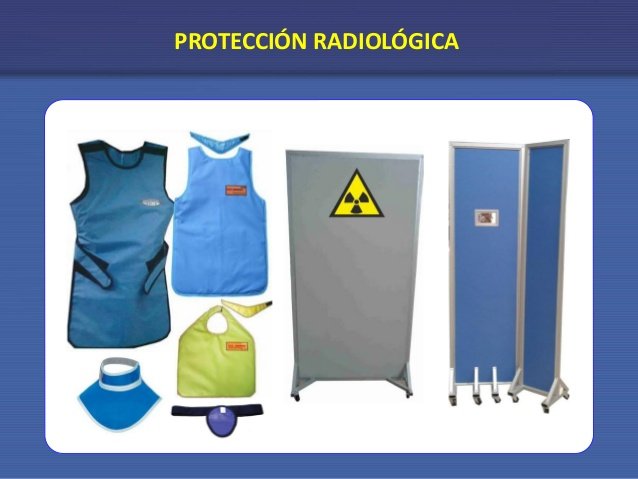
Inmediatamente después del descubrimiento de los rayos X, éstos se aplicaron en el ámbito sanitario. Sin embargo, a los pocos meses se comprobó que los rayos X podían causar efectos perjudiciales para la salud. La primera muerte conocida debida a la exposición a los rayos X fue la del norteamericana Clarence Dally, ayudante del propio Thomas Edison. A partir de ese accidente, se empezaron a hacer grandes esfuerzos para desarrollar y construir equipos, técnicas y métodos para proteger a los pacientes y a los radiólogos, y así nació la seguridad o protección radiológica.
Immediately after the discovery of X-rays, they were applied in the health field. However, within a few months it was realised that x-rays could cause detrimental health effects. The first known death due to exposure to x-rays was that of a North American Clarence Dally, assistant to Thomas Edison himself. Since that accident, great efforts began to be made to develop and build equipment, techniques and methods to protect patients and radiologists, which is how radiological safety or protection was born.
La protección radiologica es una actividad multidisciplinar, científica y técnica, cuyo objetivo es proteger a las personas y al medio ambiente contra los efectos nocivos que pueden derivarse de la exposición a las radiaciones ionizantes.
Radiation protection is a multidisciplinary, scientific and technical activity aimed at protecting people and the environment against the harmful effects which may result from exposure to ionising radiation.

La protección se divide en varias partes, pero en las que me centraré para ti son tres porque es el área en la que se centra el personal de ingeniería biomédica, que es la protección de los trabajadores del hospital y de los pacientes:
Protection is divided into several parts, but the ones I will focus on for you are three because that is the area where biomedical engineering personnel focus, which is the protection of hospital workers and patients:
En primer lugar, "minimizar el tiempo de exposición" es una forma de proteger tanto al paciente como al personal. En este sentido, los equipos de rayos X se someten a pruebas de tiempo y radiación, con el fin de garantizar que cumplen las normas indicadas por el Colegio Internacional de Radiología.
First of all, "Minimising Exposure Time" is a way of protecting both the patient and the staff. In this sense, X-ray equipment is tested for time and radiation, with the aim of ensuring that it meets the standards indicated by the International College of Radiology.
Las medidas a aplicar para minimizar el tiempo tendrán fundamentalmente dos objetivos: prevenir la exposición y evaluar y vigilar las dosis recibidas.Entre las medias de prevención están:
The measures to be applied to minimise the time will have two main objectives: to prevent exposure and to assess and monitor the doses received:
1. Identificación de zonas de trabajo con exposición a radiación.
1. Identification of work areas with radiation exposure.
2. Clasificación de las zonas: la clasificación de las zonas de trabajo en función de las dosis anuales previstas y el riesgo de una contaminación o exposición potencial son las siguientes:
2. Classification of areas: The classification of working areas according to the expected annual doses and the risk of potential contamination or exposure are as follows:
a. Zona vigilada, cuando existe la posibilidad en las mismas de recibir dosis efectivas superiores a 1 mSv/año (límite del público) e inferiores a 6 mSv/año, o dosis equivalentes superiores a 1/10 de los limites para el cristalino, piel y extremidades.
a. Monitored area, where there is a possibility of receiving effective doses in excess of 1 mSv/year (public limit) and less than 6 mSv/year, or equivalent doses in excess of 1/10 of the limits for the lens, skin and extremities.
b. Zona controlada cuando se pueden superar los 6 mSv/año para la dosis efectiva o dosis equivalentes superiores a 3/10 de los límites para el cristalino, piel y extremidades. Dentro de esta última categoría, se considera la “zona de permanencia limitada”, cuando existe riesgo de recibir una dosis superior a los límites anuales establecidos, la “zona de permanencia reglamentada”, cuando se puede recibir, en una única exposición, dosis superiores a los límites reglamentarios en cortos periodos de tiempo o la “zona de acceso prohibido”, cuando se puede recibir, en una única exposición, dosis superiores a los límites reglamentarios.
b. Controlled area when 6 mSv/year can be exceeded for the effective dose or equivalent doses in excess of 3/10 of the limits for the lens, skin and extremities. Within this last category, the "area of limited permanence" is considered when there is a risk of receiving a dose in excess of the established annual limits, the "area of regulated permanence" when doses in excess of the regulatory limits may be received in a single exposure in short periods of time or the "area of prohibited access" when doses in excess of the regulatory limits may be received in a single exposure.
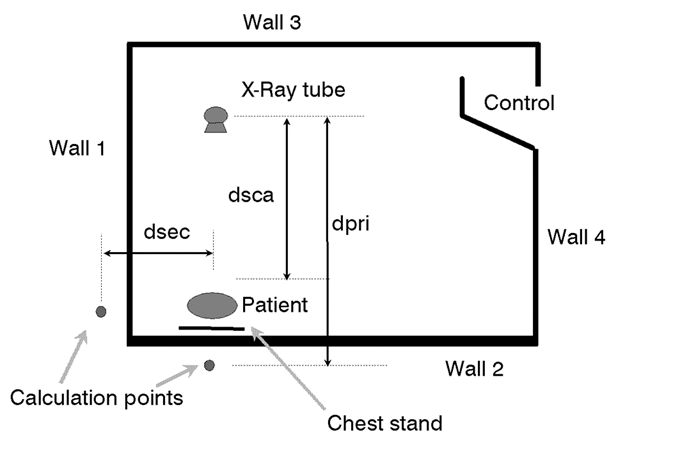
En segundo Tenemos “Distancia de Radiación” la variación de la exposición con la distancia está regida por la ley del inverso del cuadrado de la distancia. Duplicar la distancia entre una persona y una fuente de radiación reduce la dosis de radiación recibida a la cuarta parte. Así que es buena práctica mantener la máxima distancia posible a las fuentes de radiación. En un quirófano o sala de urgencias, el personal de enfermería no puede a veces dejar al paciente cuando van a hacerle una radiografía o un examen radioscópico, pero puede al menos alejarse lo más posible del equipo de rayos y ponerse un delantal plomado.
Second we have "Radiation Distance" the variation of exposure with distance is governed by the law of the inverse of the square of the distance. Doubling the distance between a person and a radiation source reduces the radiation dose received to a quarter. So it is good practice to keep the maximum possible distance from radiation sources. In an operating theatre or emergency room, nurses may not be able to leave the patient when an X-ray or radioscopic examination is to be performed, but they can at least move as far away as possible from the X-ray equipment and put on a leaded apron.
- El área o espacio de la habitación donde se realizan los rayos x debe ser de 6 metros cuadrados.
- The area or space of the room where x-rays are performed should be 6 square metres.
En tercer lugar el “Empleo de Blindaje” Se llama blindaje al material capaz de absorber la radiación. Cuanto más grueso sea, más disminuirá la radiación al otro lado del mismo. Algunos materiales son mejores que otros. El plomo y el hormigón se utilizan para atenuar los rayos X y la radiación gamma. Las salas de rayos X suelen estar forradas de plomo o construidas con ladrillos de material absorbente ( como la barita). Para proteger el cuerpo cuando se permanece en el interior de la sala durante la exploración radiológica, se utilizan delantales, protectores tiroideos y guantes plomados. En medicina nuclear pueden utilizarse ladrillos de plomo, protectores plomados para viales y jeringas.
Thirdly, "shielding" is a material capable of absorbing radiation. The thicker it is, the more the radiation on the other side of it is reduced. Some materials are better than others. Lead and concrete are used to attenuate X-rays and gamma radiation. X-ray rooms are often lined with lead or built with bricks of absorbing material (such as barite). Leaded aprons, thyroid shields and gloves are used to protect the body when inside the room during the radiological examination. In nuclear medicine, lead bricks, leaded shields for vials and syringes may be used.
- las paredes deben tener una altura de 3 metros y estas deben tener un grosor de 50 cm de hormigón, así como tambien tener un recubrimiento de plomo de 0.28 mm.
- the walls should be 3 metres high and have a thickness of 50 cm of concrete, as well as a 0.28 mm lead sheathing.
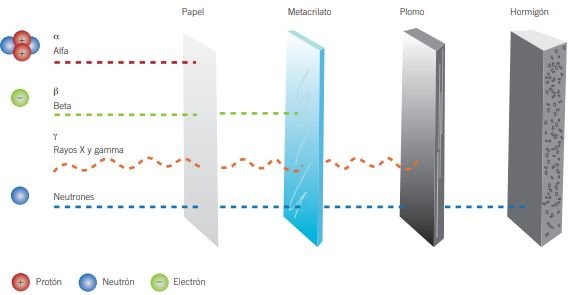
How to verify radiation and exposure time?
Con el paso de los años, las estructuras tienden a agrietarse o deteriorarse por distintos motivos, es por esto que semestral se realizan pruebas de radiación en diferentes puntos con la finalidad de atacar cualquier problema que genere una fuga de radiación y afecte al personal, así como tambien si el equipo emite mas radiación o un mayor tiempo que pueda afectar al paciente.
Over the years, structures tend to crack or deteriorate for various reasons, which is why radiation tests are carried out every six months at different points in order to address any problems that may cause radiation leakage and affect staff, as well as if the equipment emits more radiation or a longer time that may affect the patient.
Para estas mediciones utilizamos dosimetros digitales y analógicos, así como tambien contadores de Geiger, los primeros cambian de color a medida que van recibiendo la radiación y el segundo nos arroja un valor en la radiación recibida, este equipo es muy delicado y su resguardo es importante.
For these measurements we use digital and analogue dosimeters, as well as Geiger counters, the former changing colour as they receive radiation and the latter giving a value for the radiation received. This equipment is very delicate and its safekeeping is important.
¿Como se realiza este proceso?, se dispara el equipo de rayos x con su dosis mas alta y se mide desde diferentes ángulos, esto para verificar la protección de las paredes; con respecto a dentro del área se disparan a diferentes dosis con respecto a estudios que se realizarían normalmente a fin de asegurar la salud del paciente.
How this process is carried out, the x-ray equipment is fired at its highest dose and measured from different angles to verify the protection of the walls; with respect to inside the area, different doses are fired with respect to studies that would normally be carried out in order to ensure the patient's health.

Este es uno de los trabajos de mayor importancia en cuanto a seguridad y protección se refiere. La vida de los pacientes y personal pueden acarrear un mayor problema si las calibraciones y ajustes pertinentes no se realizan adecuadamente.
This is one of the most important jobs in terms of safety and security. The lives of patients and staff can be at risk if calibrations and adjustments are not carried out properly.
Espero que les haya gustado este post, no olvidés votar, compartir y seguirme para estar al día de toda la nueva información que subo sobre equipamiento médico.
I hope you liked this post, don't forget to vote, share and follow me to keep up to date with all the new information I upload about medical equipment.
Este contenido es de mi autoría.
Las imágenes utilizadas en este contenido tienen sus enlaces de referencia para los que son de otros autores.
This Content is of my Authorship.
The images used in this content have their reference links for those that are from other authors.
Enlaces de Interes / Links of Interest
https://seguridaddelpaciente.es/resources/documentos/VI_Conferencia/03gonzalez_i.pdf
https://www.csn.es/documents/10182/914805/La+protecci%C3%B3n+radiol%C3%B3gica+en+el+medio+sanitario
https://www.pardell.es/curso-rayos-x.html